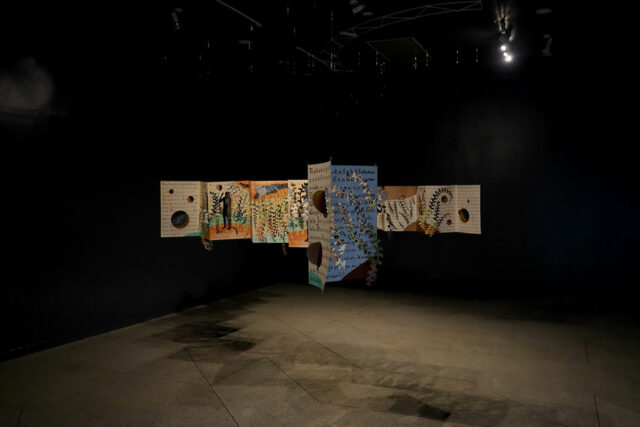NET INFLOWS of foreign direct investments (FDI) fell to a three-month low in March, with first-quarter inflows also dropping by more than 40% year on year, amid heightened global uncertainty arising from the US tariff policies.
Preliminary data from the Bangko Sentral ng Pilipinas (BSP) showed that FDI net inflows declined by 27.8% to $498 million in March from $689 million in the same month a year ago.
 This was the lowest FDI level in three months or since the $110-million inflow posted in December.
This was the lowest FDI level in three months or since the $110-million inflow posted in December.
“The said decline resulted from lower net inflows across all major FDI components,” the BSP said.
Nonresidents’ net investments in debt instruments of local affiliates plunged by 31.6% to $329 million in March from $481 million in the same month in 2024.
Nonresidents’ net investments in equity capital, other than the reinvestment of earnings, declined by 27.4% to $102 million from $141 million year on year.
This came as equity capital placements dropped by 5.5% to $148 million. On the other hand, withdrawals nearly tripled (185.1%) to $46 million.
Equity placements in March mostly came from Singapore (25%), Japan (24%) and the United States (20%), as well as South Korea (9%) and Malaysia (5%).
“These were infused largely to the real estate; manufacturing; financial and insurance; and administrative and support services industries,” the central bank said.
Reinvestment of earnings dipped by 1.2% to $66 million in March from $67 million a year ago.
Investments in equity and investment fund shares fell by 19% to $168 million in March from $208 million a year earlier.
FIRST-QUARTER SLIDE
In the first quarter, FDI net inflows plunged by 41.1% to $1.76 billion from $2.99 billion in the comparable year-ago period.
Net investments in debt instruments dropped by 35.3% to $1.2 billion in the period ending March from $1.85 billion a year ago.
Investments in equity capital other than the reinvestment of earnings plummeted by 66.7% to $298 million in the January-March period from $894 million in the previous year.
Equity placements declined by 64.4% year on year to $397 million while withdrawals fell by 54.8% to $99 million.
These placements were mainly from Japan (42%), followed by the United States (17%), Singapore (14%), and Malaysia and Singapore (both at 6% each).
Nearly half (47%) of these were invested in the manufacturing sector, followed by real estate (22%) and the financial and insurance (13%) sectors.
On the other hand, nonresidents’ reinvestment of earnings rose by 8.8% to $264 million from $242 million.
“The decline in FDI is among the different indicators, along with increasing debt and rising unemployment, that show the gradually decreasing economic growth in the country,” Leonardo A. Lanzona, an economics professor at the Ateneo de Manila University, said.
In the first quarter, the Philippine economy grew by a weaker-than-anticipated 5.4%, well below the government’s 6-8% target for the year.
Gross capital formation, the investment component of the economy, grew by 4% in the first quarter, slowing from the 5.5% seen in the fourth quarter.
“The truth of the matter is the country’s growth is only dependent on its remittances and consumption. Hence, if global conditions remain poor, we will not be expecting FDIs to come in,” Mr. Lanzona added.
John Paolo R. Rivera, a senior research fellow at the Philippine Institute for Development Studies, said the drop in FDI is due to a combination of global and domestic headwinds.
“Externally, rising geopolitical tensions, high interest rates in developed markets, and global trade uncertainties especially from US tariff actions continue to dampen cross-border investments,” he said.
Rizal Commercial Banking Corp. Chief Economist Michael L. Ricafort noted the US government’s tariff policies have led investors to adopt a wait-and-see stance on investments.
US President Donald J. Trump had started making tariff threats since he assumed office in late January. However, it was only in early April that he announced a baseline 10% tariff on all its trading partners, as well as higher reciprocal tariffs on most of its trading partners. The so-called reciprocal tariffs are suspended until July.
Domestically, Mr. Rivera said investors were likely more cautious in the first quarter and are now awaiting more clarity on “policy direction, post-election stability, and economic strategy execution in medium to long term.”
“Internally, the Philippines is contending with political noise, investor concerns over regulatory predictability, and slow progress in structural reforms that are necessary to boost long-term investor confidence.”
For the coming months, Mr. Ricafort said the full implementation of the Corporate Recovery and Tax Incentives for Enterprises to Maximize Opportunities for Reinvigorating the Economy Act could entice investors.
“Some foreign investors could have also waited for Fed and BSP rates to go down further before becoming more aggressive to finance more FDIs,” he added.
BSP Governor Eli M. Remolona, Jr. has signaled further easing this year, possibly through two more 25-basis-point (bp) rate cuts. He said a rate cut is also still on the table at the Monetary Board’s policy review on June 19.
The BSP’s FDI data differ from the investment data of other government sources as they cover actual investment flows, it said.
The approved foreign investments data published by the Philippine Statistics Authority are sourced from investment promotion agencies and represent investment commitments that may not be fully realized in a given period. — Luisa Maria Jacinta C. Jocson






















